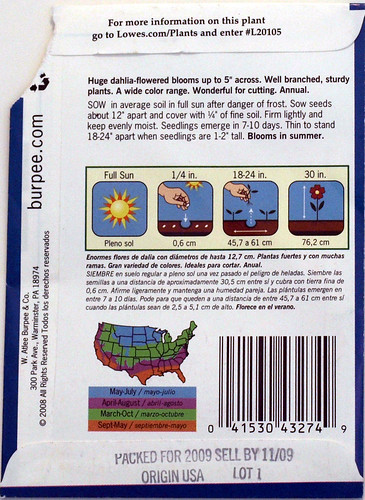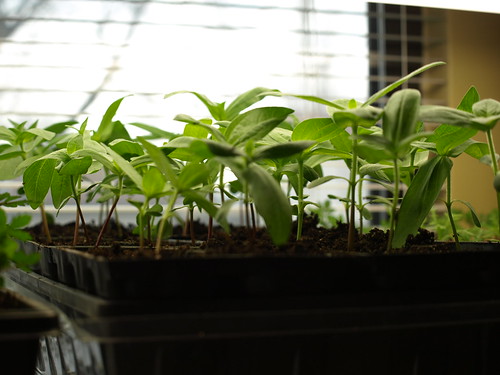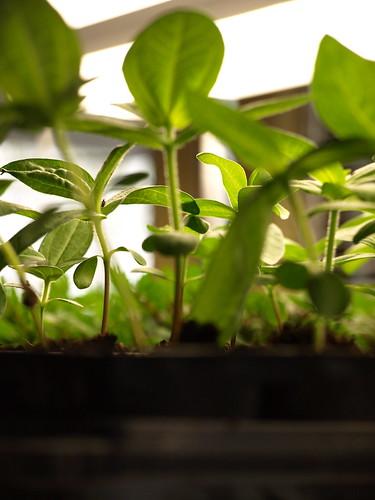Today I transplanted Zinnias they are getting very large and look like real plants. I thought that along with growing seeds I would start to research the plants we are planting. Find out where the best place to plant them, how tall they are going to get, and any other helpful facts. During my research I have already found one or two things that we have done wrong.
I'm not going to beat myself up this is all a learning process and half the fun is doing it better next year.
We started the following seeds February 27, 2009

Today the plants look this
Hi gals, you are looking beautiful
Sorry about the transplanting I didn't know you didn't like that. Please don't die and I promise some yummy fertilizer soon.
In case your interested here is what I found out during my research, more then you ever thought you wanted to know.
Zinnias are one of the easier annuals to start from seeds. Seed can be started indoors and seedlings can be transplanted easily outside for earlier bloom. Sow seeds indoors six weeks before the last frost and plant outdoors after frost danger is past as young plants are susceptible to cold. Sow the taller varieties in 3-inch peat pots because they resent transplanting. They will not grow substantially until temperatures are above 50 degrees.
Alternatively, seeds can be sown directly outdoors when the soil has warmed sufficiently. Germination is not as good in cold soil. Pinch the tops out of young plants when they are 4-6 inches high to make them bushy. Remove faded blossoms to keep them producing.
Plant spacing should allow for air circulation, and bottom watering will circumvent mildew problems. Plans should be spaced 4 to 12 inches apart according to variety.
The best way to prevent insect problems is to use other plants that attract beneficial insects that will feed on the pests, such as companion planting.




No comments:
Post a Comment